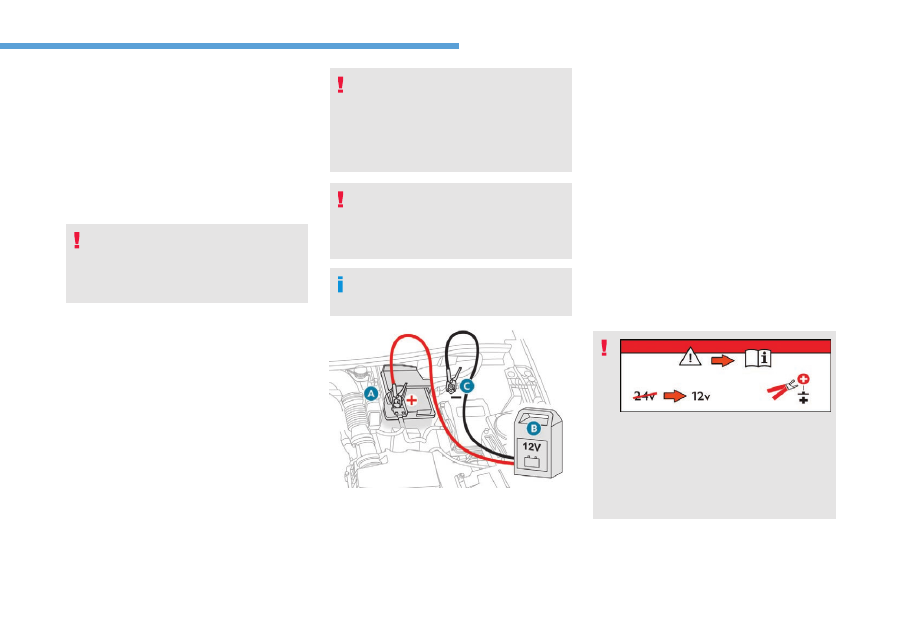Peugeot 5008 (2017 year). Manual - part 19

8
287
In the event of a breakdown
F Wait for it to return to idle.
F Disconnect the jump lead cables in reverse
order.
F Refit the plastic cover to the (+) terminal, if
your vehicle has one.
F Allow the engine to run for at least
30 minutes, by driving or with the vehicle
stationary, so that the battery reaches an
adequate state of charge.
If your vehicle has an automatic gearbox,
do not try to start the engine by pushing
the vehicle.
Charging the battery using
a battery charger
For optimum service life of the battery, it is
essential to maintain an adequate state of
charge.
In some circumstances it may be necessary to
charge the battery:
- if you only use your vehicle for short
journeys,
- if the vehicle is to be taken off the road for
several weeks.
Contact a PEUGEOT dealer or a qualified
workshop.
If you wish to charge your vehicle's battery
yourself, use only a charger compatible
with lead-acid batteries with a nominal
voltage of 12 V.
Follow the instructions provided by the
manufacturer of the charger.
Never reverse polarities.
It is not necessary to disconnect the
battery.
F Switch off charger B before connecting the
cables to the battery, so as to avoid any
dangerous sparks.
F Ensure that the charger cables are in good
condition.
F Raise the plastic cover, if your vehicle has
one, on the (+) terminal.
F Connect charger B cables as follows:
- the positive (+) red cable to the (+)
terminal of battery A,
- the negative (-) black cable to earth
point C on the vehicle.
F At the end of the charging operation, switch
off charger B before disconnecting the
cables from battery A.
F Switch off the ignition.
F Switch off all electrical consumers (audio
system, lighting, wipers, etc.).
If this label is present, it is essential to
use only a 12 V charger to avoid causing
irreversible damage to the electrical
components related to the Stop & Start
system.